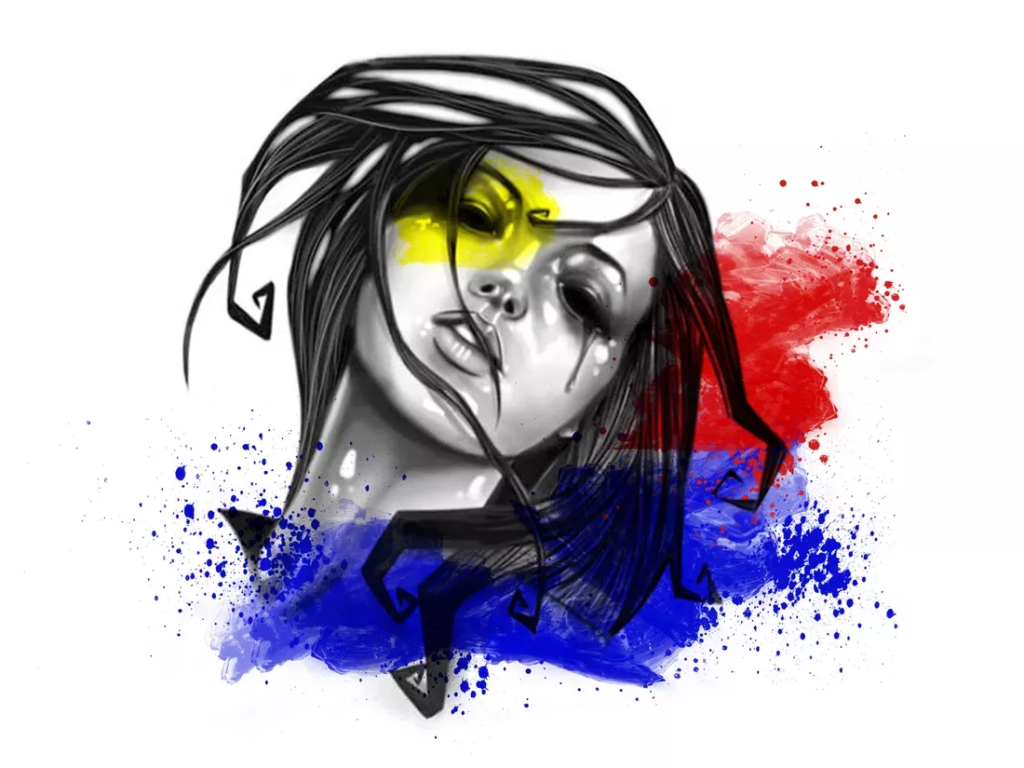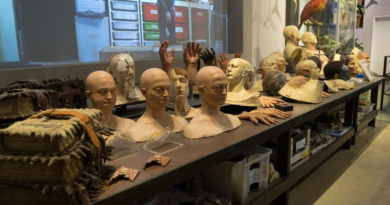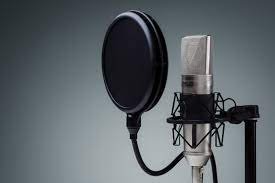Graphic Designer (1 years course)
Graphic Designer click here
Brief Job Description: Graphic designer creates visual concepts, using computer
software or by hand, to communicate ideas that inspire, inform, and captivate
consumers. They develop the overall layout and production design for various
applications such as advertisements, brochures, magazines, and corporate
reports etc. with high visual impact.
Personal Attributes: The individual in this role must be creative with high degree
of professional responsibility and timeliness with deadlines. He/she in this role
has to be open-minded, willing to try new things and comfortable taking advice
from unexpected sources. Individual must not be colour blind at any stage.
Qualifications Pack For Graphic Designer

Description
Budget Budget is an estimate of the total cost of production that may include a
break-up of cost components.
Creative Brief Creative brief is a document that captures the key questions that serve as
a guide for the production including the vision, objective of the project,
target audience, timelines, budgets, milestones, stakeholders etc.
Graphic A visual item on screen or print displayed or stored in computer as data.
Design A plan of work produced to show the function or look of an object based
on which decision could be drawn upon.
Concept The overall plan of the working
Theme The subject of the brief or the topic that the brief adheres to.
Mood board An arrangement of images, materials and text that reflects a project style
or concept
.
Mind map A map that is used to visually organizethe data serving as an inspiration for
ideas
Aesthetic A set of guidelines and principles that define a piece of work as beautiful
and artistic
Storyboard A graphic organsiser in the form of sequence of images that depict how
the product will function
Vector Images Typically, these are 2D graphical objects that are created within graphic
system and remain scalable in applications
Raster Images These are images that are either photographed or pixel matrix
Budget Budget is an estimate of the total cost of production that may include a
break-up of cost components.
Sector Sector is a conglomeration of different business operations having similar
businesses and interests. It may also be defined as a distinct subset of the
economy whose components share similar characteristics and interests.
Sub-sector Sub-sector is derived from a further breakdown based on the
characteristics and interests of its components.
Vertical Vertical may exist within a sub-sector representing different domain areas
or the client industries served by the industry.

Occupation Occupation is a set of job roles, which perform similar/related set of
functions in an industry
Function Function is an activity necessary for achieving the key purpose of the
sector, occupation, or area of work, which can be carried out by a person
or a group of persons. Functions are identified through functional analysis
and form the basis of OS.
Sub-functions Sub-functions are sub-activities essential to fulfill the achieving the
objectives of the function.
Job role Job role defines a unique set of functions that together form a unique
employment opportunity in an organization.
Occupational Standards
(OS)
OS specify the standards of performance an individual must achieve when
carrying out a function in the workplace, together with the knowledge and
understanding they need to meet that standard consistently. Occupational
Standards are applicable both in the Indian and global contexts.
Keywords/Terms Description
NOS National OccupationalStandard(s)
QP QualificationsPack
NSQF National Skill Qualifications Framework
NVEQF National Vocational Education Qualifications Framework
NVQF National Vocational Qualifications Framework
Performance Criteria Performance Criteria are statements that together specify the standard of
performance required when carrying out a task
National Occupational
Standards (NOS)
NOS are Occupational Standards which apply uniquely in the Indian
context.
Qualifications Pack
Code
Qualifications Pack Code is a unique reference code that identifies a
qualifications pack.
Qualifications Pack(QP) Qualifications Pack comprises the set of OS, together with the educational,
training and other criteria required to perform a job role. A Qualifications
Pack is assigned a unique qualification pack code.

Unit Code Unit Code is a unique identifier for an Occupational Standard, which is
denoted by an
Unit Title Unit Title gives a clear overall statement about what the incumbent should
be able to do.
Description Description gives a short summary of the unit content. This would be
helpful to anyone searching on a database to verify that this is the
appropriate OS they are looking for.
Scope Scope is the set of statements specifying the range of variables that an
individual may have to deal with in carrying out the function which have a
critical impact on the quality of performance required.
Knowledge and
Understanding
Knowledge and Understanding are statements which together specify the
technical, generic, professional and organizational specific knowledgethat
an individual needs in order to perform to the required standard.
Organizational Context Organizational Context includes the way the organization is structured and
how it operates, including the extent of operative knowledge managers
have of their relevant areas of responsibility.
Technical Knowledge Technical Knowledge is the specific knowledge needed to accomplish
specific designated responsibilities.
Core Skills/Generic
Skills
Core Skills or Generic Skills are a group of skills that are key to learning and
working in today’s world. These skills are typically needed in any work
environment. In the context of the OS, these include communication
related skills that are applicable to most job roles
Interpret graphic visualisation brief

he user/individual on the job needs to know and understand:
KB1. how to source materials for research and reference.
KB2. how to express ideas using techniques like mind maps, moodboards,
storyboards, etc.
KB3. applicable copyright norms and intellectual property rights
KB4. applicable health and safety guidelines pertaining to working for long periods
on edit machines
Skills (S)
A. Core Skills/
Generic Skills
Writing Skills
The user/individual on the job needs to know and understand how to:
SA1. document decisions on the processes involved and techniques to be used
with reasons
SA2. document other areas(e.g. requirements of the target audience, market, endproduct ,reference links and videos) that may be relevant for the team
Reading Skills
The user/individual on the job needs to know and understand how to:
SA3. read and understand the script and determine requirements
SA4. read about emerging techniques in production
SA5. read user manuals for equipment and software
SA6. read about the tastes and preferences of the target audience and the market
where the end-product intends to be distributed
Oral Communication (Listening and Speaking skills)
The user/individual on the job needs to know and understand how to:
SA7. understand the creative vision of the brief and work to resolve any issues
SA8. communicate with team members, relay instructions, collaborate and resolve
issues with members of the post-production team handling different
aspects/processes to determine the effort involved for the activities that
would need to be performed.

B. Professional Skills Decision making
The user/individual on the job needs to know and understand how to:
SB1. manage decision on suitable course of action
Plan and Organize
The user/individual on the job needs to know and understand how to:
SB2. plan the activities, workflow, resourcing and timelines in accordance with the
creative and technical requirements
SB3. manage deadlines successfully on time
SB4. work well in a fast-paced environment
Customer Centricity
The user/individual on the job needs to know and understand:
SB5. check that their own work meets customer requirements
Problem Solving
The user/individual on the job needs to know and understand:
SB6. identify any issues that may arise during post-production and find solutions to
address them
Analytical Thinking
The user/individual on the job needs to know and understand:
SB7. how to have a keen eye for detail and maintain an aesthetic sense towards
the final output
Critical Thinking
The user/individual on the job needs to know and understand how to:
SB8. appraise the quality of the raw footage gathered to ensure it is in line with
the initial concept and quality standards
Manage graphic tools
Description This OS unit is about managing equipment and material throughout the design
process.
Scope This unit/task covers the following:
preparing tools for the designing process
managing interim work-products during production
ensuring work-products are ready to display as per requirements
Performance Criteria(PC) w.r.t. the Scope
Element Performance Criteria
Preparing tools for the
designing process
To be competent, the user/individual on the job must be able to:
PC1. gather rawstock imageries/material (e.g.photographs, clipart, image
filters) and select relevant material that can be used for designing.
PC2. sort and keep the material ready for the production process.
PC3. ensure software / equipment is ready for use (e.g.photoshop, scanner,
etc.)
Managing interim workproducts during
production
PC4. create tools in line with pictorial representations (brush, pickers of
different size and colors)

PC5. save back-ups for interim work-products in the appropriate file formats
Ensuring work-products
are ready to display as
per requirements
PC6. ensure final work-products are prepared in appropriate file formats (e.g.
psd, .ai, .cdr,etc.) and appropriate medium(e.g. dvd,cd and digital flash
drives)
PC7. clear logs/data and keep the software and equipment ready for future use
Knowledge and Understanding (K)
A. Organizational
Context (Knowledge
of the company /
organization and its
The user/individual on the job needs to know and understand:
KA1. the purpose and intended use of the end-product
KA2. the creative and technical specifications of the work-product, including
the quality standards expected of the final output
KA3. the intended distribution/exhibition mediums for the production
KA4. establish data management and work flow systems
KA5. how to maintain quality control as production scales
B. Technical Knowledge The user/individual on the job needs to know and understand:
KB1. how to work on relevant equipment and software e.g. photoshop,
illustrator, corel draw, in design, printer, scanner, etc.
KB2. the format, resolution and quality in which the material would be needed
KB3. the storage media relevant to the type of production
KB4. file-naming conventions appropriate to the production
KB5. how to keep abreast of changes in technology and update skills
accordingly
KB6. applicable health and safety guidelines
Skills (S)
A. Core Skills/ Generic
Skills
Writing Skills
The user/individual on the job needs to know and understand how to:
SA1. prepare documentation, including charts, to accompany the work-product
Reading Skills
The user/individual on the job needs to know and understand how to:
SA2. read and understand the user and technical specifications of equipment
and software
Oral Communication (Listening and Speaking skills)
The user/individual on the job needs to know and understand how to:
SA3. discuss and understand requirements and specifications by the
supervisor
SA4. discuss any problems with the brief that could impact the production
process and solicit suggestions for resolving them
B. Professional Skills Plan and Organize
The user/individual on the job needs to know and understand:
SB1. plan and prioritize work according to the requirements
Critical Thinking
The user/individual on the job needs to know and understand how to:
SB2. understand upcoming technical advancement on the quality aspects for
equipment uses, the resources and services.
Decision making
The user/individual on the job needs to know and understand how to:
SB3. manage decision on suitable course of action
Customer Centricity
The user/individual on the job needs to know and understand how to:
SB4. check that own and/or peer’s work meets customer requirements.
Problem Solving
The user/individual on the job needs to know and understand how to
SB5. undertake troubleshooting the problems of computer system.
Analytical Thinking
The user/individual on the job needs to know and understand how to:
SB6. monitor the nature and quality of vendor materials, tools and equipment
for future purchases
Visualise and generate design
Description This OS unit is about cutting down the production of raw material and arranging them
on a timeline to create a sequential output that meets production requirements
Scope This unit/task covers the following:

• generate visuals and design concept appropriate for the brief
Performance Criteria(PC) w.r.t. the Scope
Element Performance Criteria
Generate visuals and
design concept
appropriate for the
brief
To be competent, the user/individual on the job must be able to:
PC1. collect relevant data to support design
PC2. list the design concept to be conceptualized
PC3. relate the concept with meaningful graphics
PC4. illuminate the design with indicative messages accurately
PC5. identify the elements of production which are relevant as per the creative
brief and inputs provided
PC6. present the idea,theme and concept to the peers
PC7. configure exact vocal representation relevant to the data to support design
Knowledge and Understanding (K)
A. Organizational
Context
(Knowledge of the
company /
organization and
its processes)
The user/individual on the job needs to know and understand:
KA1. the production process followed by the organization
KA2. the creative vision and elements of production relevant to his/her job role
KA3. the project pipeline/schedule and timelines relevant to their work
KA4. the intended purpose of the design that need to be created
B. Technical
Knowledge
The user/individual on the job needs to know and understand:
KB1. how to organize the collected data
KB2. how to present the visualized data and collect feedback
KB3. the elements and principles of design
KB4. how to create digital design layouts
KB5. the implication of the format on the quality of the end-product
KB6. applicable copyright norms and Intellectual Property Rights
Writing Skills
The user/individual on the job needs to know and understand how to:
SA1. document notes on the process and arranging them in a professional manner
SA2. document notes and project specifications for guidance and reference
Reading Skills
The user/individual on the job needs to know and understand how to:
SA3. read and understand the script and determine requirements
SA4. gather,organize and store stock images, cliparts, photographs for use in
projects
SA5. gather suitable references from various sources for use during production
SA6. research attributes of the genre, language,culture, regionof the production to
determine aspects that may need to be reflected in the final output
Oral Communication (Listening and Speaking skills)
The user/individual on the job needs to know and understand how to:
SA7. understand the creative vision and technical requirements that need to be
complied with the brief
SA8. discuss interim/finalwork peers and superiors and solicit their feedback on
improvements
SA9. liaise with relevant people in a way that supports the production process
B. Professional Skills Plan and Organize
The user/individual on the job needs to know and understand how to:
SB1. plan and prioritize work according to the requirements
Decision making
The user/individual on the job needs to know and understand how to:
SB2. finalize the design as per the project requirement
Customer Centricity
The user/individual on the job needs to know and understand how to:
SB3. check that own and/or peer’s work meets customer requirements.
SB4. work effectively in a customer facing environment.
Problem Solving
The user/individual on the job needs to know and understand how to:
SB5. address comments on the interim/final work-products and make changes
accordingly
Analytical Thinking
The user/individual on the job needs to know and understand how to:
SB6. have a keen eye for detail and maintain an aesthetic sense towards colour
shapes, forms and software capabilities of the final output while planning the
workflow and tools required.
Critical Thinking
The user/individual on the job needs to know and understand how to:
SB7. appraise the quality of own work to ensure it is inline with the expected
quality standards
Create and edit graphic designs
Description This OS unit is about creating original graphic illustrations and visuals that
meets production requirements.
Scope This unit/task covers the following:
• Create & edit raster images independently
• Create & edit vector images independently
• Create & edit digital design independently
Performance Criteria (PC) w.r.t. the Scope
Element Performance Criteria
Create & edit raster
images
independently
To be competent, the user/individual on the job must be able to:
PC1. select graphic elements in accordance with the design idea
PC2. freeze the color choice based on the design idea
PC3. create graphics according to the design idea,requirements, specifications
Create & edit vector
images
independently
PC4. create vector artworks and illustrations
PC5. select the color output based on the final style required
Create & edit digital
design independently
PC6. create single/multi page documents appropriate to the designs specification
PC7. prepare the final document as per the target platform specification
Knowledge and Understanding (K)
A. Organizational
Context
(Knowledge of the
company /
organization and
its processes)
The user/individual on the job needs to know and understand:
KA1. the creative vision and elements of production relevant to his/her job role
KA2. the project pipeline/schedule and timelines relevant
KA3. the intended purpose of the design that needs to be created








